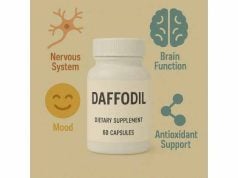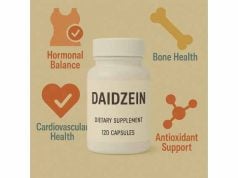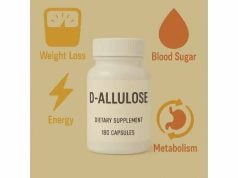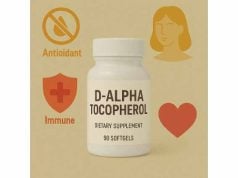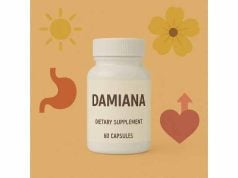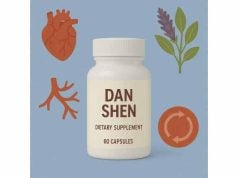
Dymethazine is a synthetic anabolic compound once sold in bodybuilding “hardening” stacks. Chemically, it’s an azine-linked dimer of methasterone (also known as Superdrol), a potent oral anabolic-androgenic steroid (AAS). Because of that structure, dymethazine can break down into methasterone in the body, making its effects—and its risks—similar to those of other 17-alpha-alkylated oral steroids. Users often look to it for rapid increases in strength and fuller-looking muscle, but the same design that makes it effective also raises the likelihood of liver injury, adverse lipid changes, and other systemic harms. In many countries, products labeled to contain dymethazine have been recalled or are illegal to sell, and the compound is prohibited in sport. If you’re researching dymethazine, it’s vital to understand not only what it promises but also the medical, legal, and anti-doping realities attached to it.
Quick Dymethazine Highlights
- May drive short-term strength and lean mass gains via androgen receptor activation.
- Carries high risk of cholestatic liver injury and adverse lipid shifts; products have been recalled.
- No medically established dose; safest dose is 0 mg/day due to legal and health risks.
- Avoid if you have liver, kidney, cardiovascular, endocrine, or prostate conditions; if pregnant or breastfeeding; if under 18; or if you are subject to anti-doping rules.
Table of Contents
- What is dymethazine and does it work?
- How dymethazine acts in the body
- Benefits: claims vs real-world evidence
- Dosage: why no safe dose is established
- Side effects, risks, and who should avoid
- Legality, anti-doping, and product quality
What is dymethazine and does it work?
Dymethazine (also spelled “dimethazine”) is a laboratory-synthesized anabolic-androgenic steroid designed and marketed in the late 2000s and early 2010s to appeal to bodybuilders seeking fast physique and performance changes. Its chemistry is unusual: two methasterone molecules are linked by an azine bridge to form one larger molecule. In controlled metabolism models and animal systems, dymethazine degrades to methasterone and its methasterone-type metabolites, which helps explain both its sought-after anabolic effects and the toxicities associated with 17-alpha-alkylated oral steroids. ([PubMed][1])
Because dymethazine behaves like other oral AAS, the expected outcomes mirror that class: measurable short-term gains in gym performance (strength, workload tolerance) and increases in lean mass with a concurrent drop in perceived subcutaneous water (the “dry/hard” look). These effects are driven by androgen receptor signaling that up-regulates muscle protein synthesis and enhances neuromuscular efficiency. However, with designer steroids, there’s an important caveat: consumer products have not undergone the rigorous safety and dosing research required for approved medications. In fact, multiple brands labeled to contain dymethazine or closely related steroids were later recalled or found to be misbranded or adulterated, underscoring that “what’s on the label” may not match what’s in the bottle. ([U.S. Food and Drug Administration][2], [PubMed][3])
Another practical reality: unlike creatine, beta-alanine, or protein, dymethazine is not a legal dietary ingredient in many jurisdictions. In the U.S., methasterone (the compound dymethazine breaks into) is a Schedule III anabolic steroid, and federal rules adopted under the Designer Anabolic Steroid Control Act (DASCA) broaden control to “designer” variants. This means “does it work?” cannot be separated from “is it lawful and safe to obtain or use?” For most readers, the risk-benefit profile will not justify use. ([Federal Register][4])
Bottom line: Yes, dymethazine can produce rapid strength and physique changes typical of potent oral AAS—but with equally typical steroid-class risks, compounded by regulatory, quality-control, and anti-doping issues.
How dymethazine acts in the body
Chemical design and breakdown. Dymethazine is an azine-linked dimer of methasterone. In stability experiments and metabolic models (human liver microsomes and humanized mice), it degrades to methasterone and yields methasterone-type metabolites found in urine, indicating that standard methasterone screening can detect dymethazine use. Practically, that means the body “sees” dymethazine as a source of methasterone, a potent DHT-derived oral steroid. ([PubMed][1])
Mechanism of action. Like other DHT-derived AAS, the active species bind androgen receptors in muscle and other tissues. This up-regulates muscle protein synthesis and reduces protein breakdown, supporting rapid improvements in strength and lean mass. However, systemic androgen receptor activation is not selective to skeletal muscle; the same receptor is present in the liver, prostate, skin, hair follicles, and cardiovascular tissues. That’s why androgenic side effects (acne, hair loss in genetically susceptible men), endocrine suppression (reduced endogenous testosterone), and cardiometabolic disturbances (HDL suppression, LDL elevation, blood pressure increases) are common across oral AAS. ([Frontiers][5])
Liver exposure and toxicity. Dymethazine’s link to methasterone matters because methasterone is a 17-alpha-alkylated oral steroid—a chemical modification that improves oral bioavailability but increases cholestatic liver injury risk. Characteristically, steroid-induced cholestasis may present with profound jaundice and pruritus, with bilirubin levels that can exceed 20 mg/dL, yet only modest elevations of ALT/AST—reflecting “bland” cholestasis rather than overt hepatocellular necrosis. In case reports tied to products containing methylstenbolone and dymethazine, patients developed severe cholestatic jaundice after following label directions for a few weeks. ([PMC][6])
Pharmacokinetics (what we do and don’t know). There are no peer-reviewed human pharmacokinetic studies establishing half-life, bioavailability, or dose-response curves for dymethazine itself. Most of what is known comes from doping-control metabolism work and case reports—strong enough to show that dymethazine converts to methasterone and triggers AAS-typical metabolites, but not enough to define a “therapeutic window” or safe dose. That absence of data is critical: when a compound’s activity is inferred from its breakdown to a controlled AAS, caution—not experimentation—is the medically sound stance. ([PubMed][1])
Takeaway. Dymethazine behaves like a delivery system for methasterone. You can expect methasterone-like effects and methasterone-class risks, particularly to the liver and lipids, with no proven way to dose it “safely.”
Benefits: claims vs real-world evidence
What users expect. Marketing language and community anecdotes emphasize three outcomes: (1) rapid strength gains (notably in compound lifts), (2) a “hard” look with reduced perceived water retention, and (3) modest weight gain that is disproportionately lean mass. These expectations are consistent with DHT-derived oral AAS that often enhance neural drive and protein synthesis while not causing marked intracellular water gain.
What the evidence shows. There are no randomized controlled trials of dymethazine in healthy adults. The best inferential evidence comes from:
- Mechanistic studies showing dymethazine degrades to methasterone and produces methasterone metabolites detectable in urine.
- Case reports where products containing dymethazine (often stacked with methylstenbolone) led to pronounced cholestatic liver injury despite label-compliant use, demonstrating biological potency but also toxicity at consumer doses.
- Broader AAS literature documenting increases in fat-free mass and strength with supraphysiologic AAS exposure—effects that come with high rates of adverse events. ([PubMed][1], [PMC][7])
The benefit–risk equation. Short-term performance improvements are plausible (and in the AAS literature, common), but they’re achieved at the expense of health markers that predict long-term disease:
- Hepatic injury: cholestasis with severe hyperbilirubinemia can develop within weeks.
- Atherogenic lipid shifts: lowered HDL and elevated LDL after oral AAS administration.
- Endocrine suppression: down-regulated hypothalamic–pituitary–gonadal axis, potentially causing low testosterone symptoms after discontinuation.
- Blood pressure and cardiovascular strain: higher vascular risk profile with chronic or repeated cycles. ([PMC][6], [Frontiers][5])
Against alternatives. Compared with legal, well-researched ergogenics (creatine monohydrate, caffeine, beta-alanine, nitrate), dymethazine offers a faster and more dramatic ceiling but at far higher cost to safety, legality, and sport eligibility. Individuals who compete under anti-doping rules cannot use it; those outside sport face legal restrictions and recall-worthy quality issues. For almost all lifters, the marginal aesthetic or performance gain doesn’t justify the documented risks.
Bottom line. The benefits attributed to dymethazine align with what we know about oral AAS. The same evidence base that makes those benefits plausible also documents serious harms, recalls, and legal prohibitions; the risk-adjusted value proposition is poor. ([U.S. Food and Drug Administration][2])
Dosage: why no safe dose is established
There is no medically established dosing for dymethazine. Unlike approved medications, dymethazine has no licensed indications, no human dosing studies, and no safety margins defined by regulators. Its practical activity comes from conversion to methasterone—a controlled AAS with a well-documented risk of cholestatic liver injury—so any “dose” carries the liability of a Schedule III steroid exposure in the U.S. and a prohibited substance in sport. ([Federal Register][4], [Wada Ama][8])
Why label suggestions aren’t reliable. Historical labels on “hardening” stacks sometimes suggested one or two capsules daily for 4 weeks. Case reports show severe liver injury occurring after people followed those exact directions, which means “label-compliant” isn’t the same as safe or effective. Compounding the problem, recalls have documented misbranding and the presence of unapproved steroidal ingredients, so you cannot assume consistency within or between batches. ([PMC][7], [U.S. Food and Drug Administration][2])
If you are reading this for harm reduction (not endorsement):
- Avoid use if you have any liver, kidney, cardiovascular, endocrine, or prostate condition—or if you are pregnant, breastfeeding, or under 18.
- Do not stack with other hepatotoxic agents (e.g., alcohol binges, high-dose acetaminophen) or with additional 17-alpha-alkylated orals (e.g., methylstenbolone).
- Medical oversight matters: baseline and follow-up labs (ALT, AST, ALP, GGT, bilirubin, lipid panel, CBC, creatinine, fasting glucose, blood pressure). Stop immediately if dark urine, jaundice, pruritus, right-upper-quadrant pain, or unusual fatigue appear.
- Post-cycle “fixes” are not guarantees. Over-the-counter liver “support” products have not been proven to prevent steroid-induced cholestasis. Resolution, when it occurs, comes primarily from stopping exposure and supportive care. ([PMC][6])
Recommended dose for safety: 0 mg/day. Given the lack of therapeutic indication, the documented liver risk at consumer-level exposure, legal restrictions, and anti-doping status, the medically responsible position is to recommend abstention rather than a numeric dose.
Side effects, risks, and who should avoid
Liver injury (most concerning). Dymethazine’s conversion to methasterone places it squarely in the risk profile of 17-alpha-alkylated orals: pronounced cholestatic jaundice with intense pruritus, dark urine, clay-colored stools, and only modest ALT/AST increases. In one well-documented case tied to a dymethazine/methylstenbolone product taken exactly as directed, total bilirubin peaked above 45 mg/dL and required prolonged recovery after discontinuation. Severe cholestasis can be accompanied by acute kidney injury due to bile salt deposition and dehydration. ([PMC][7])
Cardiometabolic effects. Oral AAS commonly depress HDL-C, raise LDL-C, and may elevate blood pressure—an atherogenic combination that, over cycles, can increase cardiovascular risk. Structural and functional cardiac changes have been observed in chronic AAS users across the literature, with risk increasing alongside dose, duration, and stacking practices. ([Frontiers][5])
Endocrine effects. Androgen exposure suppresses the hypothalamic–pituitary–gonadal axis, often lowering endogenous testosterone and sperm parameters after cessation. Gynecomastia can occur through androgen-to-estrogen dynamics when other compounds are stacked; erectile dysfunction and low mood may manifest post-cycle as hormone levels normalize unpredictably.
Dermatologic and androgenic effects. Acne, oily skin, and hair loss in genetically predisposed men are common with DHT-derived agents. Women may experience virilizing effects (voice deepening, hirsutism, clitoromegaly), some of which can be irreversible.
Neuropsychiatric effects. Irritability, mood swings, and anxiety can accompany supraphysiologic androgen use. The magnitude varies, but higher doses and stacks are associated with more pronounced effects in observational work.
Who should avoid outright.
- Anyone with liver disease, prior drug-induced liver injury, cholestasis history, kidney disease, dyslipidemia, hypertension, cardiovascular disease, sleep apnea, prostate disease, or hormone-sensitive cancer.
- Pregnant or breastfeeding individuals, and anyone under 18.
- Tested athletes—dymethazine/methasterone exposure is prohibited and detectable. ([Wada Ama][8])
When to seek care. Stop immediately and seek medical attention if you develop jaundice, dark urine, severe itching, right upper abdominal pain, persistent nausea, unusual fatigue, chest pain, shortness of breath, severe headaches, or neurologic symptoms.
Legality, anti-doping, and product quality
Legal status in the United States. Methasterone—the active species dymethazine can release—is specifically classified as a Schedule III anabolic steroid under the Controlled Substances Act. In 2014, the Designer Anabolic Steroid Control Act (DASCA) expanded the definition of an anabolic steroid and created mechanisms to control new “designer” variants; the DEA’s 2023 rule aligns regulations with that law. Bottom line: manufacturing, distributing, or possessing these substances without proper authorization can carry criminal penalties. ([Federal Register][4])
Anti-doping status. Anabolic agents are prohibited at all times under the World Anti-Doping Code. WADA reminds athletes annually that the Prohibited List is in force (current for 2025), and dymethazine’s metabolism to methasterone—an anabolic agent—means it’s treated as a banned substance in sport and is detectable via methasterone markers. ([Wada Ama][8], [PubMed][1])
Product recalls and adulteration. The FDA has documented recalls of products labeled to contain dymethazine, explicitly stating that such products are unapproved drugs and may cause serious adverse events, including liver injury. Analytical investigations have also found methasterone and dymethazine present in over-the-counter supplements that were not marketed as steroids, associated with consumer adverse effects and even hospitalization. This underscores two points: (1) label claims are unreliable, and (2) “accidental doping” or unintended AAS exposure is possible. ([U.S. Food and Drug Administration][2], [PubMed][3])
If you’re subject to rules (team, federation, employer). Treat any product that references “DMZ,” “superdrol clones,” “hardening,” or unnamed “pro-hormone blends” as high-risk. Use third-party tested supplements (e.g., NSF Certified for Sport, Informed-Sport) and verify substances on GlobalDRO before use. For most athletes, the only defensible course is to avoid this class entirely.
Practical advice. If you’ve already used a product you suspect contained dymethazine, bring the label (or a photo of it) to your clinician and request liver and lipid panels, blood pressure monitoring, and follow-up testing. If you compete in a tested sport, disclose the use to your medical team and review your federation’s anti-doping rules.
References
- In vitro and in vivo metabolism studies of dimethazine (2016)
- Classification of Two Steroids, Prostanozol and Methasterone, as Schedule III Anabolic Steroids Under the Controlled Substances Act (2011)
- Implementation of the Designer Anabolic Steroid Control Act of 2014 (2023)
- Cholestatic Jaundice With the Use of Methylstenbolone and Dymethazine, Designer Steroids Found in Super DMZ Rx 2.0 “Nutritional Supplement”: A Case Report (2014)
- Anabolic androgenic steroid-induced liver injury: An update (2022)
- Androgenic steroids in Over-the-Counter dietary Supplements: Analysis for association with adverse health effects (2023)
- Hardcore Formulations Issues Voluntary Nationwide Recall of Ultra-Sten and D-Zine Capsules Due to Labeling that it Contains Anabolic Steroids (2017)
Disclaimer
This article is for general information only and does not constitute medical advice. Dymethazine and related products are not approved for medical use and may be illegal to buy or possess in your country. Do not start, stop, or change any drug or supplement based on this content. Always consult a qualified healthcare professional about your specific situation, especially if you have underlying health conditions, are taking medications, or are subject to anti-doping rules.
If you found this guide useful, please consider sharing it on Facebook, X (formerly Twitter), or any platform you prefer, and follow us for future evidence-based updates. Your support helps us continue producing high-quality content.

